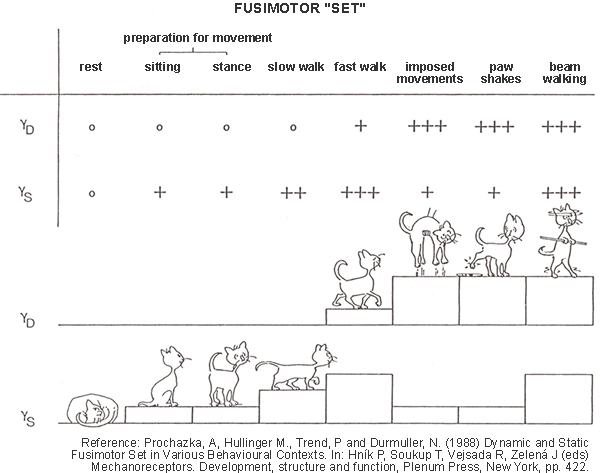Stretch Reflexes: Example in Cats
Image Reference: Prochazka, A, Hullinger M., Trend, P and Durmuller, N. (1988) Dynamic and Static Fusimotor Set in Various Behavioural Contexts. In: Hník P, Soukup T, Vejsada R, Zelená J (eds) Mechanoreceptors. Development, structure and function, Plenum Press, New York, pp. 422.

Fusimotor set summary. The specific balance of static and dynamic fusimotor activity under different behavioural conditions is shown.
- At rest: no fusimotor activity.
- Preparation for movement: ‘wind-up’ of fusimotor drive, predominantly static in type.
- Slow walking: low level static fusimotor action.
- Fast walking: further ‘wind-up’ of static activity with additional a-linked dynamic fusimotor action.
- Imposed movements: ‘switch’ from predominant static fusimotor activity to dynamic drive.
- Difficult, unpredictable or novel motor tasks: reintroduction of static fusimotor activity to a greater (beam and ladder walking) or lesser (paw shakes) extent.